It’s not the first time Lucinda Winnem has given her heart away. This time she’s marrying the “man of her dreams” – the last time, doctors removed her heart and gave it to a stranger. Her husband-to-be, Damon Simpson, is waiting at the altar when doctors Peter Hopkins, John Dunning and Keith McNeil slip into a wooden pew at the back of a quaint stone chapel at Mount Nathan, in the Gold Coast hinterland. It’s a few minutes past 4pm on a muggy spring day in October 2005. They’re late, but so is the bride.
Her medical specialists are the first people Lucinda sees as she enters the church. The tears, and mascara, start to flow when she thinks of how much it means to have these men here on her special day. It’s a small wedding – 65 of the young couple’s closest family and friends. Hopkins, Dunning and McNeil are treasured guests.
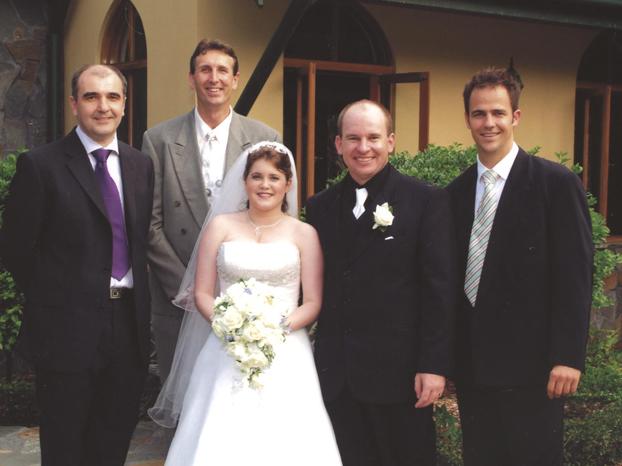
Lucinda’s bridesmaids have to redo her makeup before she’s ready to walk down the aisle to marry Damon exactly two years to the day since they first met stumbling into each other at a Gold Coast shopping centre. They say their vows before a storm hits. “If it rains on your wedding day, people always say it’s good luck,” Lucinda says with a smile.
Four months earlier, she and Damon were eating “spag bol” when she got the most important call of her life. After living with cystic fibrosis, her condition had deteriorated to the point where she was spending as much time in hospital as she was at home. She needed new lungs to survive.
“If you think of lungs as the size of a two-litre milk container, I was breathing 30ml instead of 2000ml,” Lucinda (now Simpson) recalls. “I had to stop working, which I hated, because my brain was good but I couldn’t keep up. I couldn’t vacuum, I couldn’t make the bed, couldn’t do the dishes, couldn’t hang out the washing, all of that normal householdy stuff was: ‘just forget it’.”
Her liver was also scarred from the cystic fibrosis and doctors were worried the immunosuppressant drugs she would need after a lung transplant would cause it to fail, as drugs are metabolised in the liver.

Although her heart was strong, her medical team at The Prince Charles Hospital, at Chermside, in Brisbane’s north, opted for a heart, double lung and liver transplant that night in June 2005. The operation had been performed only once before in Australia – at the same hospital, two years earlier. Surgically, it was technically less complex than trying to connect her new lungs and liver to her heart.
“The way it was explained to me was that it was easier to do the surgery like a car engine – put the heart, lungs and liver in as a block,” Lucinda, now 37, says. “You just lift one lot out and put the other lot in, so there are fewer connections.”
In what’s known as a domino transplant, Lucinda gave permission for doctors to use her healthy heart to save someone else’s life on that extraordinary night. “I was like, ‘of course’,” she says. “My original heart now beats inside someone else.”
That was the first time she gave her heart away. The second time was when she married Damon, now 45, and it happened again in April this year when she first saw the tiny baby boy they waited years to have.
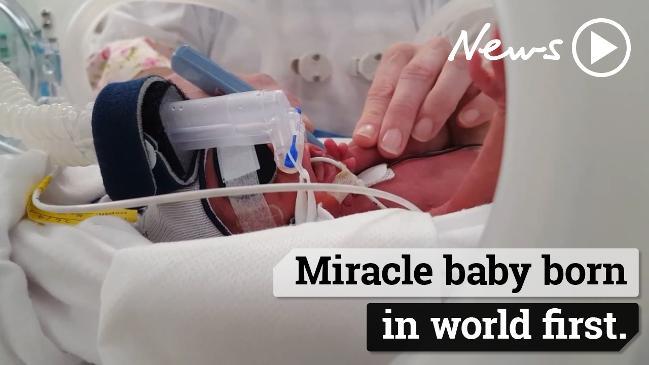
TRUE LOVE NEVER RUNS SMOOTHLY
Lucinda was wheeled into the operating theatre at midnight, only 12 weeks after going on the organ transplant waiting list. She and Damon had discussed what they would say to each other when the time came. “I love you” seemed more than enough. They’d been dating only a few weeks in 2003 when she told him she would need an organ transplant one day. Her cystic fibrosis had scared off previous boyfriends. “Other blokes I’d dated were like: ‘She’s just too high maintenance, I don’t want to deal with that’,” Lucinda says. But Damon stayed.
“If you have feelings for somebody, it doesn’t matter,” he says earnestly. “I told her, ‘At the end of the transplant, if something happened that put you in a wheelchair for the rest of her life, it wouldn’t bother me. If you love somebody, you love somebody.”
Lucinda starts to laugh as he talks. “He actually said: ‘Even if you had no arms or legs and you were just a head, I’d buy you awesome hats for Christmas’,” she says.

Damon admits to “bawling his eyes out” after Lucinda was wheeled away to become Australia’s first female heart, double lung and liver transplant recipient, one of only seven people who have had the surgery in this country – all in Queensland and all at The Prince Charles Hospital. Over the following 12 hours, the worry would turn his brown hair grey.
But inside the operating theatre, before being knocked out for the surgery, Lucinda remembers being more curious than scared, asking her medical team to explain the instruments they were about to use on her. “The surgical team were like, ‘You seem relatively calm’, and I was like, ‘Yeah, all good. What does that do?’ And they’re like, ‘That’s going to separate your rib cage. And this machine will be your heart and lungs, breathing for you while we operate’. I was like: ‘That’s so cool’,” she recalls. “I actually said to them, ‘Can I keep my old organs in a jar?’ They said, ‘We’d rather donate them to science’, and I said, ‘That’s probably a better idea’.”
Damon is grateful he didn’t have to carry her old organs home in a bottle. “I definitely didn’t want a set of lungs in a jar on [top of] the fireplace, or to turn them into a night light,” Damon says, shaking his head and chuckling at the same time. “You’ve got to have a sense of humour.”
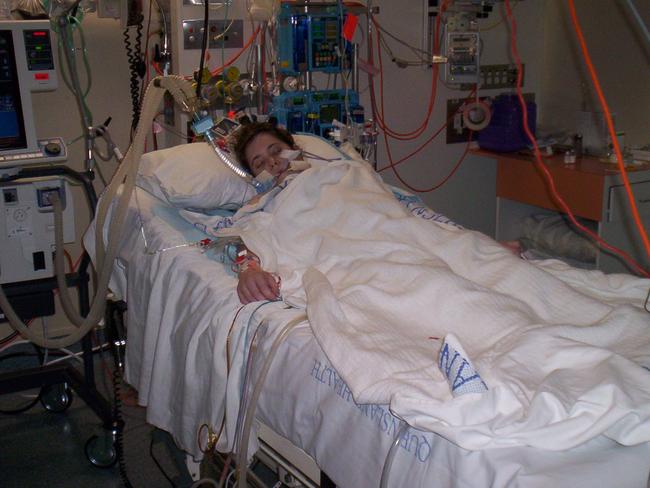
Waiting with him that night were Kaylene and Jim Winnem, Lucinda’s parents. When she was born in 1980, the heel prick test didn’t screen for cystic fibrosis. Although they noticed salt forming on her face during the hot weather, and their little girl tasted salty when they kissed her, they had no idea it was a sign something might be wrong. Their only child was diagnosed with cystic fibrosis as a 12-month-old baby, doctors telling them at the time she would be lucky to see her 21st birthday. “I thought to myself, she’s going to be different from everyone else,” Kaylene says. “She’s going to make it to her 21st birthday. She’s going to have a normal life, a normal childhood. By the time she gets to 21, they’ll be very, very advanced with their medical things.” Until then, they were determined “not to wrap her up in cotton wool”. Lucinda was allowed to play out in the snow when the family lived in Canberra and attended school camps just like her friends.
But as she watched her daughter deteriorate in her early 20s, in an admission she’s never even made to Lucinda, Kaylene says that when organ transplantation was first mentioned as a treatment option, she feared for her daughter’s life. “There were times when I could see that her body was failing her, but her determination wasn’t,” Kaylene says. “She was pushing ahead but I thought, I don’t know whether you’re ever going to make this.”
Her optimism had returned by the time she was sitting with Damon and family friends in a lounge at The Prince Charles Hospital, waiting for Lucinda’s surgery to end. “I can just remember thinking, because they started operating at midnight, once daybreak comes, everything is a new day so everything will be fine,” Kaylene says.

DEFYING EXPECTATIONS
And it was. More than 13 years later, Kaylene is cuddling her first grandchild, Angus Campbell Simpson, believed to be the world’s first baby born to a woman after a heart, double lung and liver transplant – a moment she had steeled herself into thinking would never come.
“I think from the time I was told Lucinda had cystic fibrosis, I put up a wall and thought, she’ll never have children,” the proud new grandma says. “When people talked about their grandchildren, I’d never get upset because I thought, that’s just life. We’re not going to have grandchildren. Even when Lucinda said she was going to try to have a child, I thought, if it happens, it happens. If it doesn’t, it doesn’t, and if it does, it’s meant to be.”
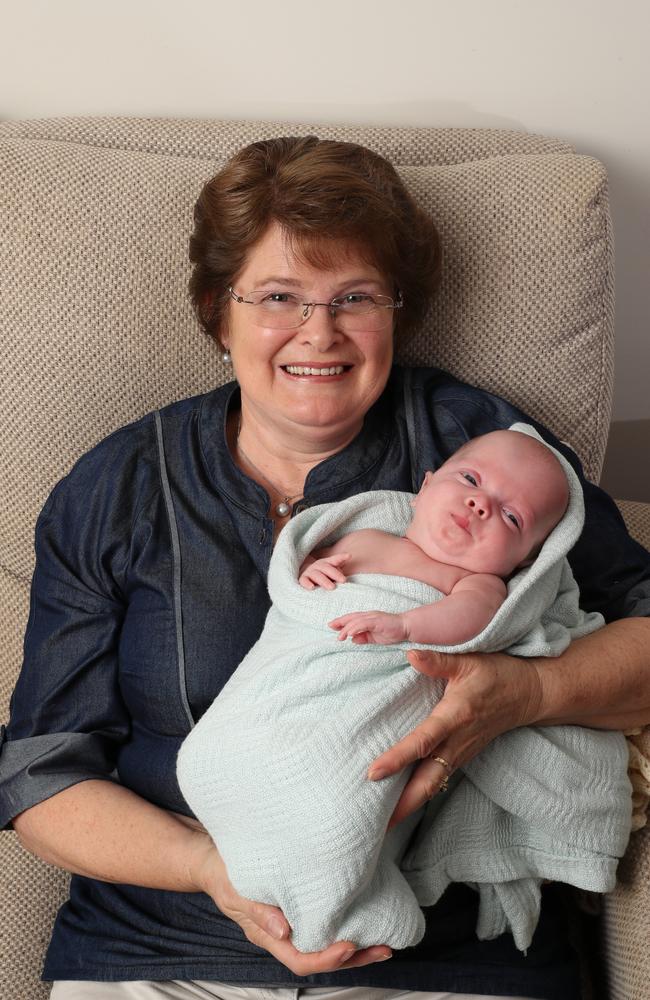
Lucinda started asking her medical teams about the possibility of having children as a young adult, years before she even met Damon. The answer was always negative. When she and Damon began talking about marriage, and they asked again about children, they were told: “Don’t be ridiculous. It’s not really an option, you’re not going to survive long enough to have a family.” But Lucinda was used to defying expectations. “I’ve always been very stubborn and think that I can pretty much do what I want,” she says. “I know that if I put my mind to it and I want to do something, then I will.”
She waited until about five years post her transplant before broaching the issue for the first time with her thoracic physician, Associate Professor Peter Hopkins, director of the Queensland Lung Transplant Service, and one of her cherished wedding guests. Hopkins still has a framed photo in his office of himself with Damon and Lucinda on their wedding day, alongside her other transplant doctors.
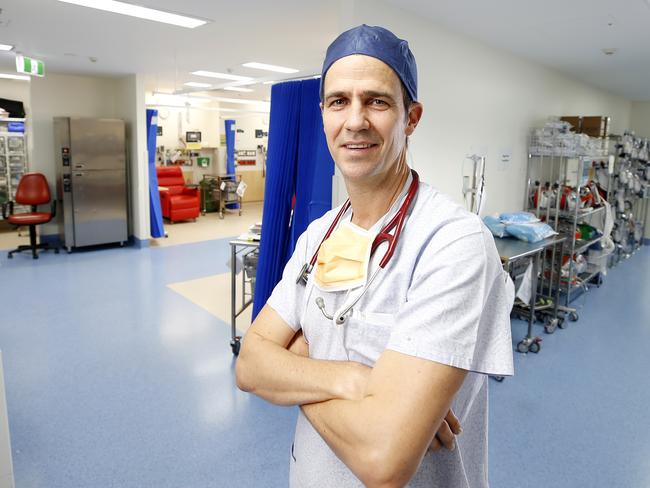
When Lucinda brought up the issue of children at the end of a consultation one day, the father of three was upbeat. “I said to her we were fairly positive about her prospects,” Hopkins says. “The key things, really, were that she had to have good heart, lung and liver function. She certainly had that; she’s very well. We knew she also had good support from Damon and her mum and dad. It was clear she was going to tick all the requirements and so we didn’t discourage it. We were quite positive towards it.” In 2013, Hopkins referred Lucinda and Damon for preconception counselling to the obstetric medicine team at the Royal Brisbane and Women’s Hospital, at Herston, in the city’s inner north.
When Associate Professor Karin Lust qualified as an obstetric physician 17 years ago, the thought of a patient as complex as Lucinda having a baby was not on the medical radar. “People in years gone by would have just been told that they should not risk a pregnancy,” says Lust, the RBWH’s director of obstetrics and gynaecology. But as medicine has advanced, so have the expectations of women with chronic conditions, such as Lucinda, about having children.
“Once they’re stabilised and well, women start thinking about the possibility of having children, something that had previously not been an option due to their ill health,” Lust says. “I think the role of the doctor is to provide them with the best information possible to allow them to make their own decision. It’s their life, not ours. There are only a small number of conditions that we know are associated with a significant risk to the mother’s life where we would recommend that they don’t embark on a pregnancy.
“But at the end of the day, it’s the decision of the woman, with her partner. We want to make sure that we don’t discourage people from coming for review should they fall pregnant either accidentally or against medical advice.”
Ideally, Lust advises women to seek pre-conception medical advice to ensure optimum outcomes for both mother and baby.
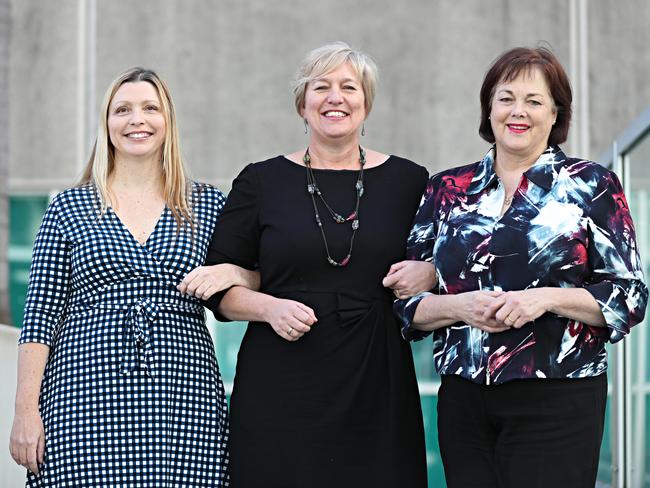
Working with The Prince Charles Hospital transplant teams, the RBWH has developed expertise in helping women fall pregnant after heart or double lung transplants in the past five years. Mothers with kidney and liver transplants have been having babies for longer.
In Lucinda’s case, doctors had to assess her daily cocktail of medications to ensure they were not likely to cause birth defects before it was advisable for her to start a family. They switched her to a 60-year-old immunosuppressant drug, selected for its known safety profile to the developing baby. Lucinda, who has cystic fibrosis-related diabetes, also had rigorous testing to ensure her blood sugar levels and her heart, lung and liver functions were all at optimum levels and stable – particularly after the change in drug regimen – before embarking on a pregnancy. And because cystic fibrosis is a recessive genetic condition – both the mum and dad have to carry a defective gene to pass it on to a child – Damon had to be DNA tested. He was negative. “Pregnancy was not something we were rushing into,” Lucinda says. “We were not being irresponsible and going, ‘Oh yeah, we’re just going to have a baby’. I think the biggest success to it is the planning.”
PREGNANT WITH EMOTION
After years of preparation, in November last year, just days after their 12th wedding anniversary, Lucinda and Damon were together at home on Tamborine Mountain, an hour south of Brisbane, when they were told, via speaker phone, they were pregnant. “I just burst into tears and hugged Damon,” Lucinda says. “It was lovely,” he adds in a soft voice.
They were only days into the pregnancy at the time and with expectant transplant mums at increased risk of miscarriage and for preterm births, they knew they had a long way to go. But for 27 weeks, Lucinda continued to work as a receptionist at Tamborine Mountain Physiotherapy in between weekly visits to various medical teams for check-ups. Her teams set up an email group to share information as the pregnancy progressed. “I had a perfect pregnancy, absolutely flawless until I hit that third trimester,” Lucinda says. “But then my blood pressure started to go up and I had protein in the urine. I was diagnosed with pre-eclampsia.” When a scan showed her baby also appeared smaller than he should have been for his gestational age, doctors suspected placental insufficiency – the baby was not getting enough oxygen and nutrients. Lucinda was admitted to the RBWH for regular monitoring and treatment.
On April 18, at 2.49pm, their miracle baby, Angus, was born by emergency caesarean, 12 weeks early. He weighed only 832g.
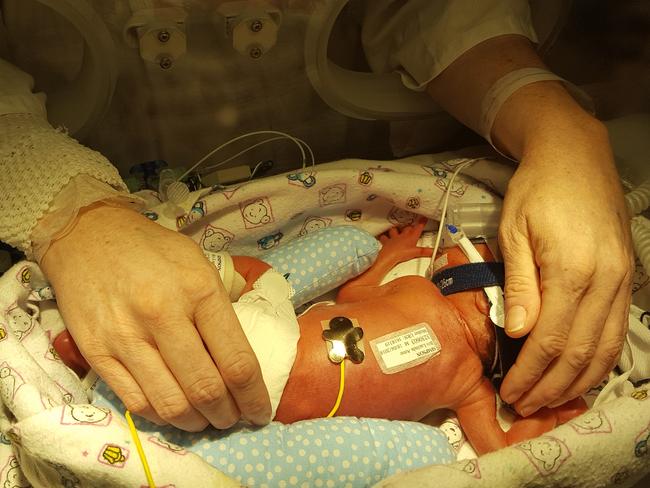
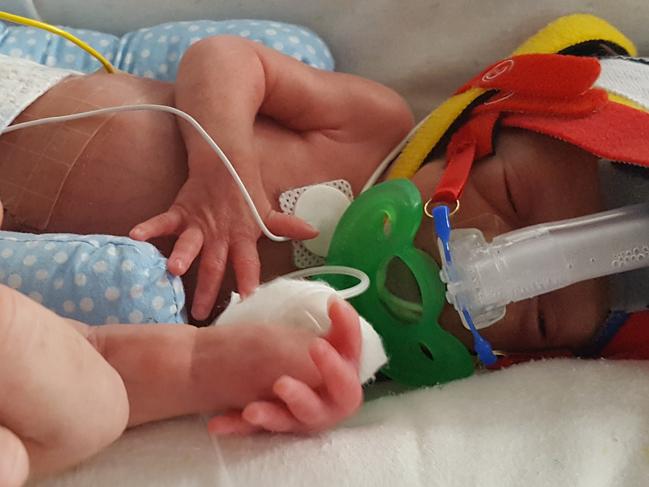
Doctors can find no other reported case studies of a baby being born to a woman after a heart, double lung and liver transplant. But RBWH obstetrician Dr Lee Minuzzo says she’s never thought about Lucinda’s pregnancy in terms of it making history. “Each person is just a woman having a baby,” she says. “If she has significant health issues, we deal with it. For that woman, it’s the most important thing she’ll ever do in her life and for her, it’s irrelevant whether she’s really sick or as healthy as everyone else.
“You want the best outcome for everyone. I’ve never thought of her as being the first heart, lung and liver transplantee having a baby. You only think about it afterwards and you think, that’s really cool, we’ve done well. She has a little baby who will be a joy for the rest of her life.”
Damon was by his wife’s side, holding her hand, as she gave birth to Angus. A screen separated them from being able to directly see the operation to remove their baby, but Lucinda was watching in the reflection of a large surgical light overhead. “It was like watching a doco,” she says. “He was pulled out feet first.” Angus was “whisked off” without his mother getting more than a glimpse, but she heard his cry. “I was like, ‘Thank God’,” Lucinda says. “He sounded a bit like a lamb, it was really cute.”
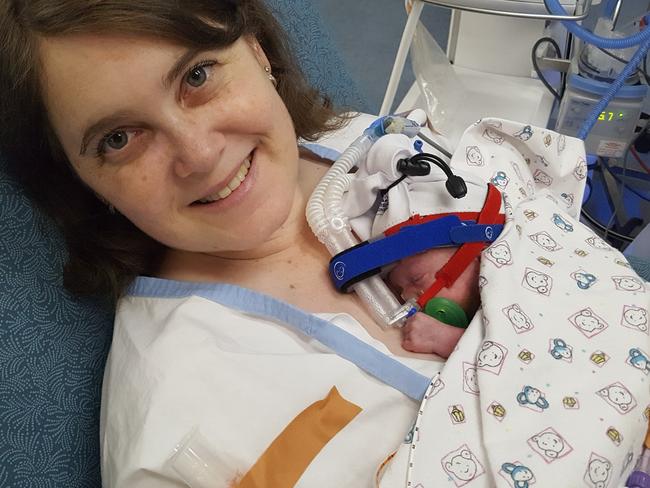
Damon cut their son’s umbilical cord and went with him to the neonatal intensive care unit. But it was 24 hours before Lucinda was able to finally meet her boy. “I just cried,” she says. “I was so happy to have him but at the same time, you don’t want him to be in a little glass box. You just want to love him and touch him and hold him. All I could do was put my hands on him firmly and that’s it. I was a bit emotional because after you give birth, you go back to the ward and most mothers have their babies with them and that was really hard. All you can hear is their babies crying and they’re tending to them and your baby’s upstairs in a box and you can’t hug him. It pulls on your heartstrings. People say to me, ‘Jeez, having a transplant must have been hard’. I can tell you, this has been harder. It’s more emotionally draining. I tried to think of the incubator as his artificial womb because mine wasn’t working efficiently and how lucky I was that it had a window in it. I tried to look at it positively like that, but it was very hard.”
It would be 11 days before Lucinda, now 37, had her first cuddle.
FAITH IN THE PROFESSIONALS
Before Angus was three weeks old, and still weighing less than a kilo, he needed emergency surgery at the Lady Cilento Children’s Hospital, on Brisbane’s southside, for a suspected obstructed hernia. The condition is life-threatening in a baby so tiny because of the risk it will result in part of his bowel dying off.
As they’ve had to do with Lucinda’s health, his parents had to put their trust in the doctors and nurses caring for him, particularly his neonatologist Dr Donna Bostock, who was in the operating theatre when he was born. “We couldn’t tell whether it was just fluid collection or whether it was a hernia, so the surgeon had to go in and explore,” she explains. “We put a breathing tube down, ventilated him, to prepare him for surgery. It was found to be an acute hydrocele, which is a fluid collection, rather than being a hernia.”
Angus had more surgery for an actual hernia at 11 weeks old. He recovered so well, he was allowed to go home five days later, on July 14. “He’s just powered along,” Bostock says. “He’s a star.”
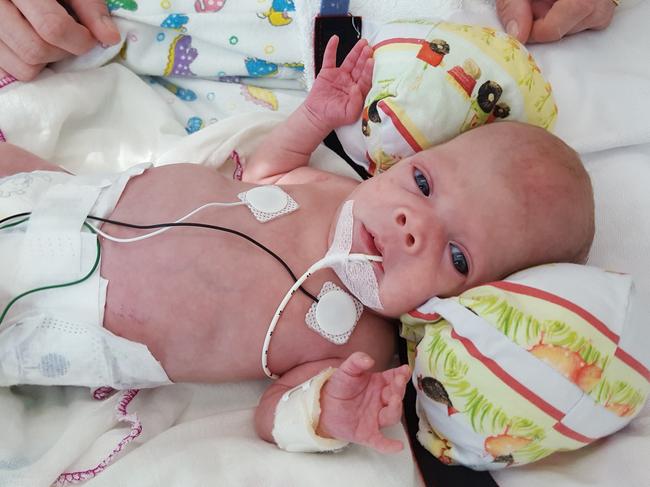
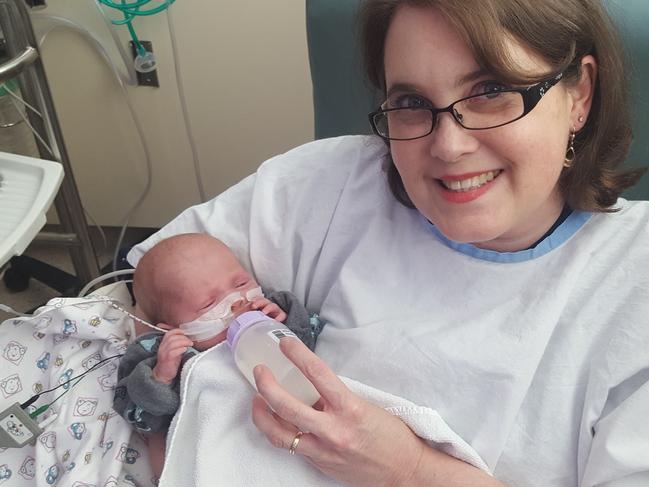
Despite his prematurity, routine head scans have been normal. “There are certain changes we might find on the head scan that suggest there’s a high risk of developing problems down the track,” Bostock says. “Prem babies are more likely to have delay, cerebral palsy, problems at school age, behavioural difficulties, but a normal head scan is more promising for their outlook.”
Damon, who is an IT specialist with American company Dolphin Imaging, describes his little boy as having his mum’s fighting spirit. “He just wanted to be here,” the proud first-time dad says. “We’ve always believed things happen for a reason. We were meant to have him, that’s why he’s here.”
As they care for Angus in the home they share with five fur babies – three rescue cats and two dogs – they’ve not forgotten the family who lost a loved one the night Lucinda received her heart, lungs and liver. “We wouldn’t be here today without them,” Damon says. “Because of them, I’ve received the gift of life, I’ve given the gift of life and now, I’ve created the gift of life,” Lucinda says. ■
To join the organ donor register: donatelife.gov.au
To donate to research: rbwhfoundation.com.au


Add your comment to this story
To join the conversation, please log in. Don't have an account? Register
Join the conversation, you are commenting as Logout
Brisbane’s most stylish: Meet our best dressed A-listers
We scour the city every week to find the most stylish guys and gals for our A-list. Find out which trendsetters made this month’s best dressed list.
The ultimate late-night wedding snack
Wedding guests can get very hungry after a day of celebrating. This bride and groom had McDonald’s on speed dial to deliver 120 cheeseburgers at the end of the night.